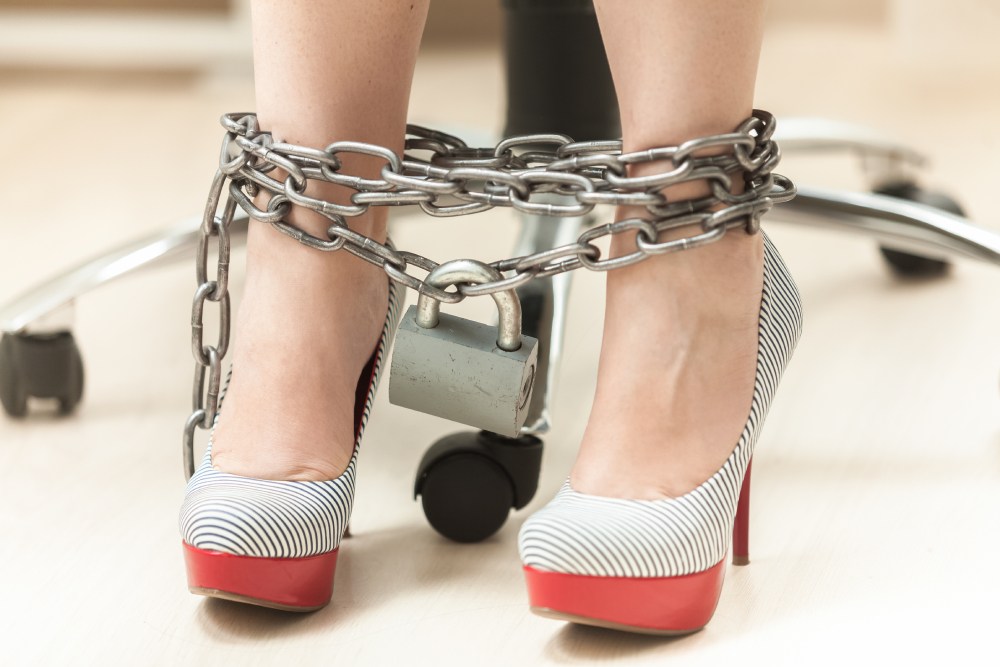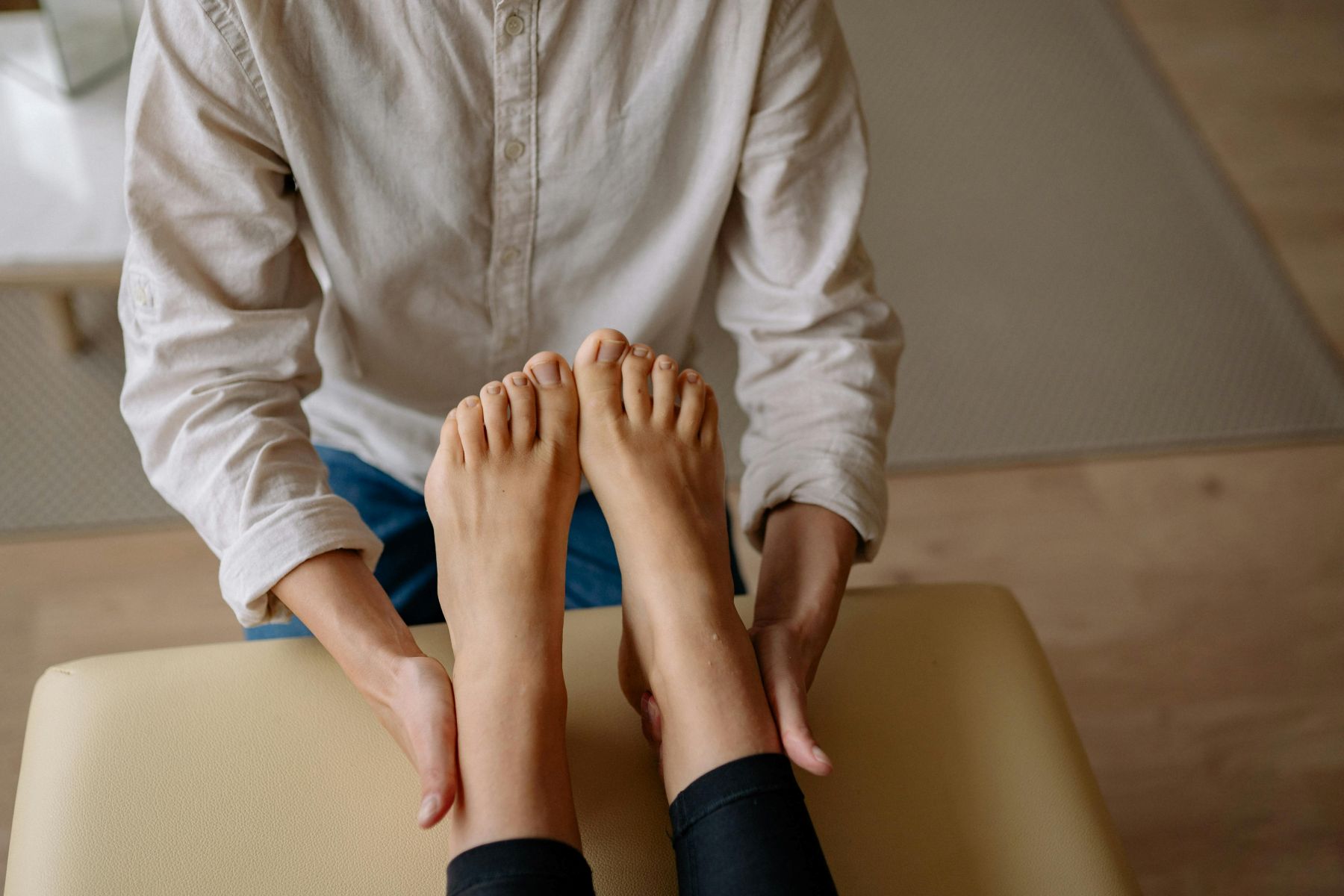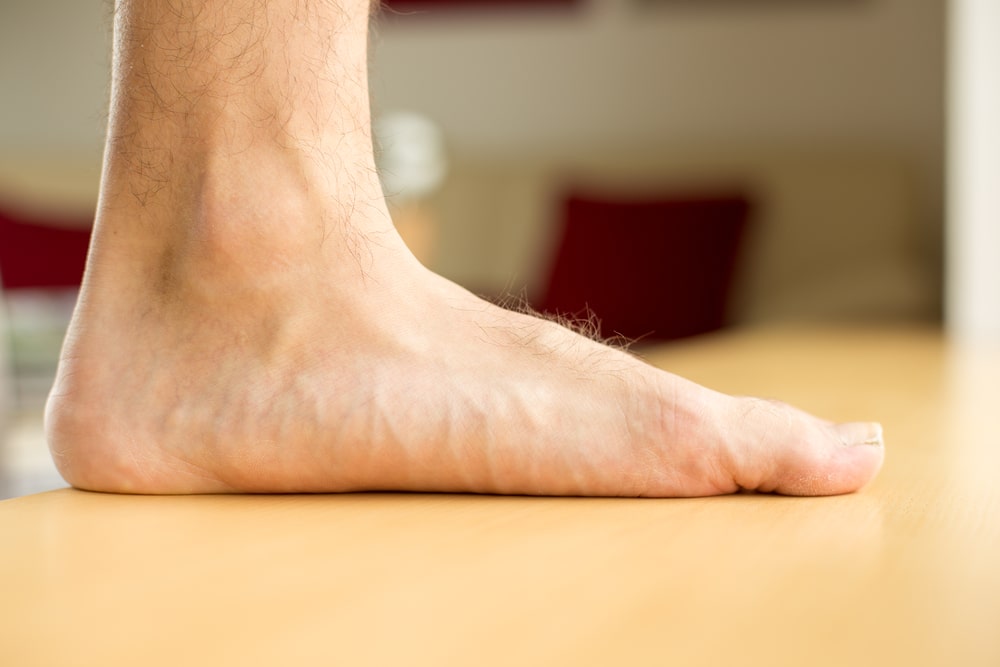
Dr. Gowreeson Thevendran
Internationally recognised Orthopaedic Surgeon with over 15 years of experience
MBChB (Bristol), MRCS.Ed, Dip. Sports Med.Ed, FRCS.Ed (Trauma & Ortho.), FAMS (Singapore)
Dr Gowreeson Thevendran is an orthopaedic surgeon who specialises in lower limb orthopaedic conditions, trauma, and fracture surgeries of both the upper and lower limbs. He also has experience in treating foot and ankle conditions, including flat feet. Additionally, Dr. Gowreeson’s expertise in flat feet includes comprehensive assessments, personalised treatment plans, surgical techniques, and post-operative care.
He received his medical education from the University of Bristol and completed his surgical training in the UK and Canada. Before establishing his private practice, he served as Chief of Foot & Ankle Surgery, Department of Orthopaedics at Tan Tock Seng Hospital, Singapore.
What are Flat Feet?
Flat feet, also known as pes planus or collapsed arches, is a condition where the arches on the inside of the feet are flattened. In a normal foot, the arch creates a space between the inner part of the foot and the ground when standing. This arch acts like a spring, providing shock absorption and helping to distribute a person’s body weight evenly across their feet and legs.
With flat feet, this arch is either very low or completely absent, causing the entire sole of the foot to come into contact with the ground, affecting the alignment of the feet and legs. At the same time, flat feet potentially lead to overpronation, where the feet roll inwards excessively or point outward.
It’s important to note that not everyone with flat feet requires treatment. However, if you’re experiencing pain, swelling, or difficulty with activities due to flat feet, it’s advisable to consult an orthopaedic specialist. They can assess your condition and recommend appropriate treatment options, which may include conservative measures like orthotics or, in some cases, flat foot reconstruction surgery.
Symptoms of Flat Feet
The arches of your foot are made up of three different ligaments, one from each side and one from the middle. These ligaments should support the weight of your foot and keep them aligned properly so that it does not hurt to walk or stand for long periods. However, when the foot arch does not rise high enough, and the entire sole touches the floor when weight is put on the foot, this could be an indication of flat feet, which may need conservative treatments or reconstruction surgery.
When one has flat feet, this can create other issues, such as:
- Plantar fasciitis (chronic sharp pain in the heel of your foot)
- Leg cramps
- Muscle pain in the arch, ankle or outside of the foot
- Toe drift (when the front part of the foot and toes point outward)
- Pain that radiates in the calves, knees, hips, lower back, or lower legs
The Types of Flat Feet
Before deciding whether surgery is for you, it is also important to know the different types of flat feet:
- Flexible: This is the most common type where the arch is visible on both feet when one is not standing.
- Rigid: This type shows no arches, regardless of whether you are sitting or standing. It can also affect just one or both feet, making it difficult for people to walk comfortably.
- Adult-Acquired: This type of flat foot is commonly caused by an inflammation or tear in the leg tendon.
- Vertical Talus: This is the result of a birth defect that prevents the natural arches from forming.
Causes of Flat Feet
While some people are born with flat feet, others develop the condition over time. Some of the common causes of flat feet include:
- Genetic Factors: Flat feet can be inherited, meaning they run in families.
- Developmental Issues: The arches of the feet may not develop properly during childhood.
- Posterior Tibial Tendon Dysfunction: This tendon helps support the arch of the foot, and injury, inflammation (tendonitis), or tears can lead to flat feet.
- Illnesses: Conditions like diabetes and rheumatoid arthritis can also affect the joints in the feet, leading to flat feet.
- Nerve or Muscle Diseases: Certain neurological or muscular conditions, such as cerebral palsy or muscular dystrophy, can contribute to flat feet.
- Injury: Injuries to the foot or ankle can disrupt the structure of the foot and lead to flat feet.
A flat foot can lead to pain in other parts of the body as well as cause abnormal wear on your shoes or foot deformities like bunions. In the case of bunions, your doctor may also suggest minimally invasive bunion surgery, depending on the severity of the bump.
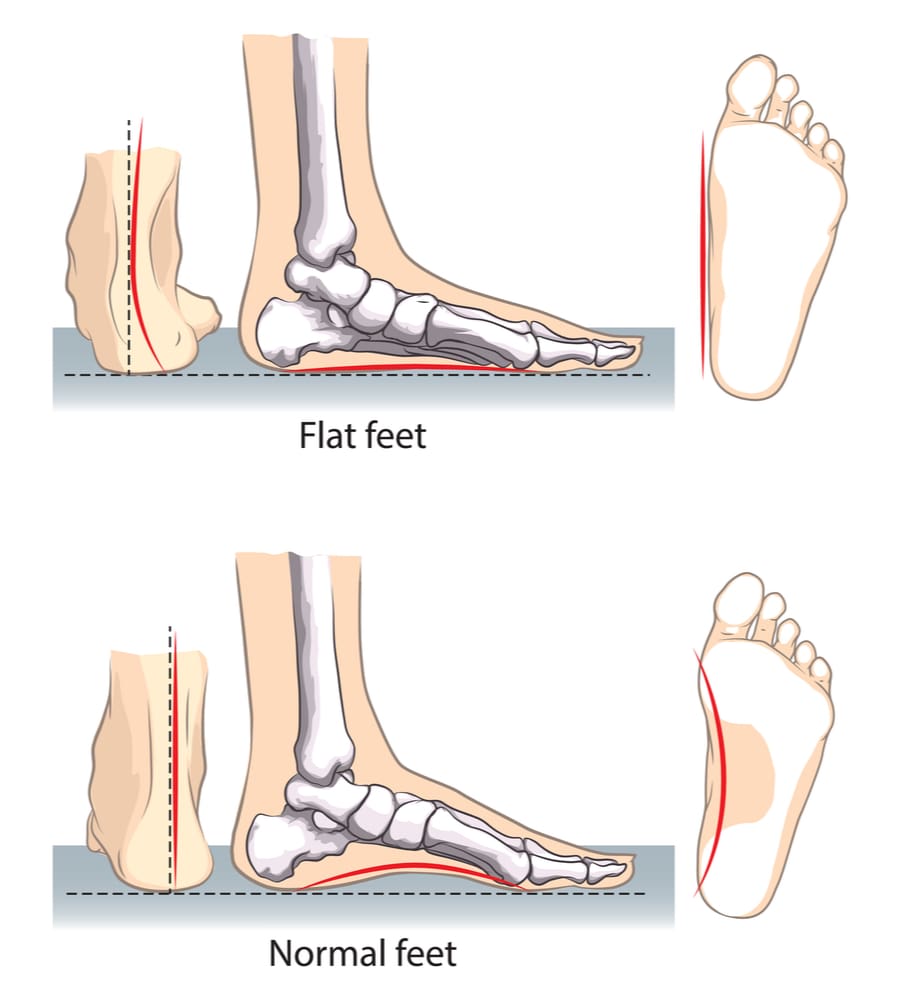
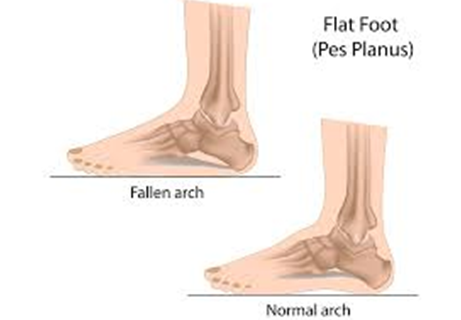
Diagnosing Flat Feet
A flat foot is diagnosed through a physical exam, where the orthopaedic specialist assesses the foot and ankle for any visible signs of a flat foot, such as a low arch or a foot that appears to roll inward when walking. The doctor may also perform tests to evaluate the strength and flexibility of the foot and ankle, as well as the range of motion in the foot and ankle joints, to prescribe the right therapy plan or surgery.
In some cases, X-rays may be ordered to obtain images of the bones and joints in the foot and ankle. This can help identify any abnormalities in the bones or joints, as well as any arthritis or other conditions that may be contributing to the flat foot. In rare cases, additional tests may be ordered to rule out other conditions that may be causing the flat foot, such as nerve or muscle disorders.
Non-Surgical Treatment for Flat Feet
Most flat feet can be managed with non-surgical methods such as shoe inserts, braces and physical therapy. However, if these non-invasive methods are unsuccessful, you may consider intervention through flat foot reconstruction surgery to adequately relieve painful symptoms.
Surgical Treatment for Flat Feet
Depending on the individual, different types of surgery may be performed to treat the flat foot as reconstruction can be done to create an arch, repair tendons, or lengthen the Achilles tendon. Minimally invasive surgeries may also be done to create a natural space between the ankle and the heel bone.
In general, flat foot reconstruction is done under general anaesthetic to numb the foot and reduce the pain post-operation. Depending on the surgery, the surgeon might shift the heel bone back to the correct alignment under the leg, remove the damaged tibial tendon or replace it. They can also repair or reconstruct the damaged spring and deltoid ligament or make incisions and spread the bone apart to recreate an arch.
Cost of Flat Foot Surgery
The cost of flat foot surgery in Singapore can vary based on several factors, including:
- Complexity of the Surgery: Simple procedures generally cost less than complex reconstructions.
- Type of Anaesthesia: General anaesthesia may be more expensive than local anaesthesia.
- Hospital Stay: The duration of your hospital stay will influence the overall cost.
- Surgeon’s Fees: Experienced surgeons may have higher fees.
- Hospital Fees: Hospital fees vary depending on the facility and the type of ward.
- Implants or Materials: If any implants or specialised materials are used, these will add to the cost.
It’s difficult to provide the total cost of flat foot surgery in Singapore. Therefore, it’s important to discuss the cost with your orthopaedic surgeon and the hospital to get a personalised estimate based on your specific needs and treatment plan. They can also advise you on insurance coverage and payment options.
Flat Foot Surgery Success Rate
Flat foot reconstruction surgery conducted by an experienced surgeon can help address the pain and improve the foot’s alignment. However, it is important to note that swelling post-surgery can last for months, and those leading active lifestyles will only be able to return to sports and the like up to 12 months after the flat foot surgery.
While individual outcomes can vary, it’s important to have realistic expectations and understand that complete recovery takes time. So, it is best to seek the advice of a medical expert for more information.
But with Dr. Gowreeson’s commitment to personalised care and expertise in surgical techniques, patients can be rest assured about the chances of recovery from flat foot reconstruction surgery. When you choose OrthofootMD, Dr. Gowreeson will thoroughly assess your condition, discuss your expectations, and provide a practical outlook on the potential outcomes of surgery.
Recovery Time For Flat Foot Surgery
After the surgery, soreness or discomfort is commonly experienced, but it is easily managed with rest and over-the-counter pain medication. Swelling or bruising may also occur, but this is typically temporary and will subside within a few days.
In certain cases, patients may experience an allergic reaction to medications or anaesthesia used during the treatment, and infection is also a potential risk, although it is rare. If you have any concerns about potential implications, you should discuss them with your doctor before undergoing any flat foot treatment.
Once the initial discomfort from the surgery subsides, it usually takes up to four months before you may transition to wearing shoes. Additionally, a full recovery may take up to two years. During this time, it is important that you will need to follow specific rehabilitation instructions such as going for physical therapy to help ensure a successful outcome.
Am I a Candidate?
While not everyone with flat feet requires surgery, it may be an appropriate option if you’re experiencing persistent foot pain that interferes with your daily activities or prevents you from enjoying sports and exercise. Similarly, if you have stiffness in your foot and ankle, making movement difficult, seek medical help.
If you believe you may be a candidate for flat foot surgery, schedule a consultation with our orthopaedic specialists at Mount Alvernia Hospital or Mount Elizabeth Novena Hospital. We will thoroughly evaluate your condition, discuss your concerns, and determine if surgery or a more conservative approach is the right path for you.
COMMON ORTHOPAEDIC CONDITIONS WE TREAT
GENERAL
Frequently Asked Questions about Flat Foot Surgery
Before discussing flat foot reconstruction surgery with your doctor in Singapore, there are some ways to manage the pain associated with flat feet. For example, some exercises can help to strengthen your arches. From heel stretches to arch lifts, these exercises can be done at home with little or no equipment needed. However, do check with your doctor before doing these exercises. Your trusted orthopaedic specialist may also recommend stretches suitable for your condition.
Pronation is the natural motion of your foot that occurs when you walk or run. Yet, when the arch on the inside of your foot flattens out, it can cause overpronation. In this case, the heel bone rotates inward and can cause excessive movement in the ankle joint and instability in the knee joint. Flat feet are a major risk factor for overpronation as they lack arches, prompting conservative treatments or surgery.
People who overpronate are also more likely to have:
- Calluses
- Pain in the foot arch, knee, hip and/or back
- Hammer toes
Yes, flat feet are also sometimes referred to as fallen arches. Flat feet are characterised by an abnormally flattened arch that falls toward the ground from a young. Fallen arches may be used to describe a flat feet condition – caused by the collapse of the arch on one or both feet – that has developed over time as one ages. When the pain becomes severe, you may wish to consult your orthopaedic doctor for flat foot treatment options, which may include flat foot reconstruction surgery.
Yes, insurance and MediSave can cover various procedures, including metatarsalgia surgery and flat foot surgery. However, the extent of the coverage will depend on the extent of your injury and your insurance plan. For MediSave-accredited clinics, patients who undergo minor procedures may be able to claim part of the surgery fees. It is best for patients to visit the clinic and confirm the eligibility of their treatment for MediSave claims and the level of coverage offered by their insurance plan.
Related posts
Clinic Location
OrthofootMD@Novena
- Mount Elizabeth Novena
38 Irrawaddy Road #05-42 Mount Elizabeth Novena Specialist Centre Singapore 329563 - +65 6352 0529
- gowreeson@healthwaymedical.com
OrthofootMD@Mount Alvernia Hospital
-
(Mount Alvernia Hospital)
820 Thomson Road #01-01/02 Mount Alvernia Medical Centre A Singapore 574623 - +65 6356 0588
- gowreeson@healthwaymedical.com
Dr. Gowreeson Thevendran is currently an orthopaedic surgeon with Island Orthopaedic, a one-stop care centre for orthopaedic health under Healthway Medical Group. He specialises in treating lower limb orthopaedic conditions, as well as trauma and fracture surgery of both the upper and lower limbs. Prior to establishing his private practice, Dr Gowreeson was Chief of Foot & Ankle Surgery at the Department of Orthopaedics at Tan Tock Seng Hospital (TTSH). Today, he continues to serve the Orthopaedic Department at TTSH as a visiting consultant.
This is the author
